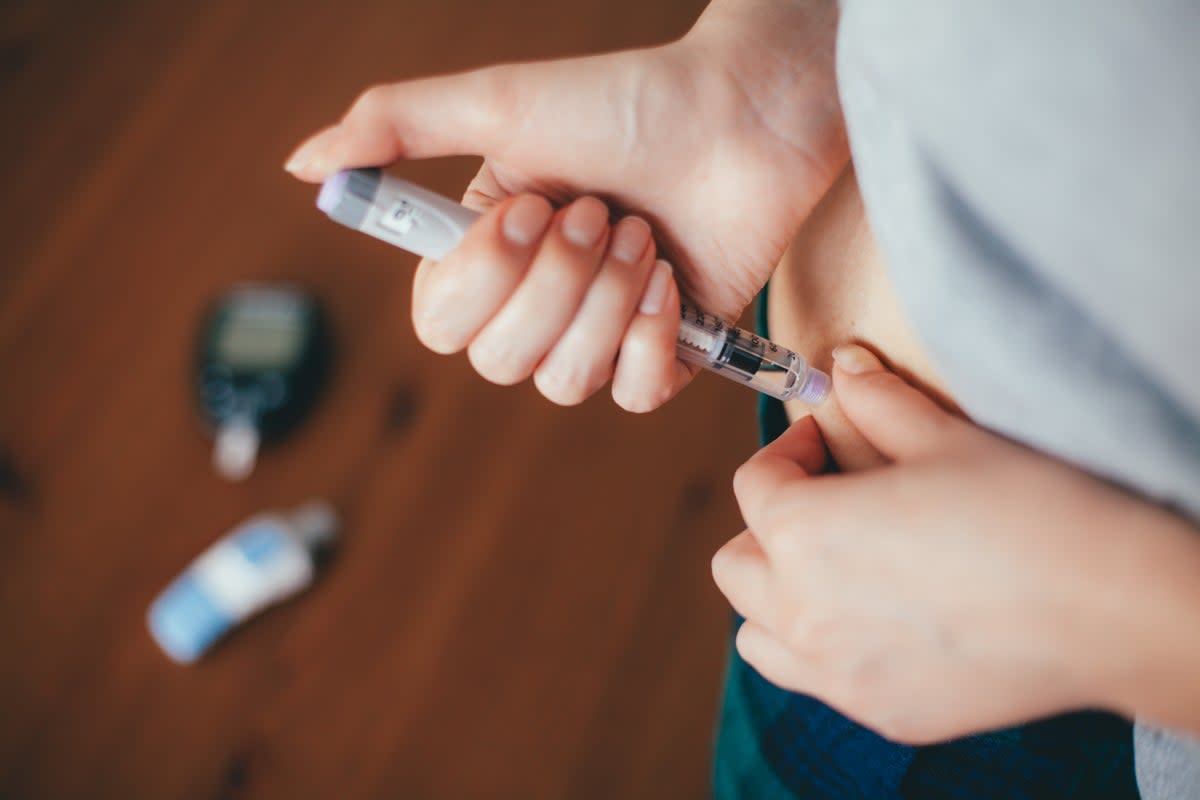Voices: New tech can revolutionise care for type 1 diabetics – so why did I have to fight so hard to get mine?

Covid-19 killed thousands of people with diabetes, of all types. The aftermath is killing more.
A disturbing report by Diabetes UK this week found there were more than 7,000 excess deaths involving people with the various forms of the condition in 2022; a rise of 13 per cent when compared with pre-pandemic levels.
The situation is getting worse: in the first part of 2023, there were 1,461 excess deaths. That figure covers January to March. It is three times the number recorded in the same period in 2022.
Here’s why: regular health checks known as “care processes” aren’t being carried out. Basic care isn’t being provided. Potentially revolutionary new tech isn’t getting through. I speak from bitter personal experience here as someone with type 1 diabetes, an autoimmune disorder that’s with you for life.
The checks serve as potential alarm bells for people with all types of diabetes. They are where the early warning signs for a potentially frightening suite of complications can be picked up.
Needless to say, these complications can be life-changing in the worst possible way.
Because it seems impossible to talk about “health” without also mentioning “money” in the same breath, here’s something else to ponder: they’re very expensive to treat. The later they are picked up, the more expensive (and life-changing in the worst possible way) they get.
Checks and early intervention thus make all kinds of sense.
My own experience is eerily similar to one of the case studies Diabetes UK supplied alongside the report. Anthony Parker, 44, who has had the condition for 34 years, suffered repeated cancellations of his appointments until, finally, communication ceased. So did I, a 51-year-old with nearly half a century’s experience of T1.
Unlike me, this meant he went on to develop one of those complications, namely retinopathy (he’d also not had an eye appointment in two years). This affected his sight (it can lead to blindness), which limited his activity. He put on weight, and his condition thus further deteriorated.
The difference between us is that I’d lost a lot of weight (good) which left me faced with a reduced insulin requirement (good) but also unusually volatile blood sugar levels (not good at all). I needed medical assistance with finding a new normal. But I also struggled to get it. Appointments were similarly cancelled. Then communication ceased.
Then a cold fury took over, and I submitted a written complaint.
That did the trick. I finally received the first decent hospital appointment I’d had in a decade. It ultimately led to me getting a piece of kit, which was supposed to have been rolled out among the entire T1 community some time ago, and that my GP had twice written to the hospital recommending I be given.
T1 is a pain in the neck. Let’s be anatomically correct. It can be a pain in the leg, stomach, or whoever else you care to stick your needles to deliver insulin (unless you have a pump).
Continuous glucose monitoring (CGM) makes it much easier to manage. You put an electrode into your arm. You wave your mobile phone over it. Hey presto, it coughs up your blood glucose number without you having to stick a pin in your finger (which can hurt quite a bit). It also screeches if your sugar is going too high or low. My apologies to fellow cinemagoers at Stratford’s Picturehouse who were treated to mine going off repeatedly recently. CGM is life-changing in a good way. Unless you’re trying to watch a movie.
One man who has pushed it hard is Professor Partha Kar, a consultant endocrinologist and something of a hero to us T1s. Professor Kar tells me CGM should be “basic care”. But it isn’t. I had to battle to get it.
Another piece of T1 kit that can be game-changing are those insulin pumps. These can (once again) be both game-changing and cost-effective through improving condition management and reducing complications.
No one has ever discussed one of these with me. But the experience of Paul Sandells, who blogs and tweets about T1 as Diabetic Dad, came as no surprise when I discussed it with him. Sandells had to fight to get his pump. And his CGM too.
Successful T1 management involves pestering. Then pestering some more. Finding allies. This is okay if you’re used to fighting the system, although it’s exhausting and it chips away at your mental health (rates of depression among people with my condition are very high).
Not everyone knows where the buttons are, let alone which ones to push when you’ve found them. The results are, frankly, dreadful.
What got me started on this long and winding road were some statistics showing the number of people hitting a blood glucose target set by the National Institute for Clinical Excellence (NICE) with the aim of minimising those life-changing (and expensive) complications was very low: roughly one in ten T1s.
Prof Kar told me the number hitting a higher international target is somewhat better (roughly 25 per cent). I’m told that the data will show a marked improvement. Those electrodes are the reason.
They ought to be made easy to get. Ditto those regular checks. Ditto pumps for those who want (or need) them.
Securing basic care shouldn’t require you to engage in a bare-knuckle brawl to get it. Did I say basic care? Perhaps I should rephrase that: basic, life-saving care. No, no, we need to make one more addition: basic, cost-effective, life-saving care.
There. Perhaps that will shake those with control over this out of their torpor? Because I for one find writing columns infinitely preferable to writing icily angry letters of complaint.


